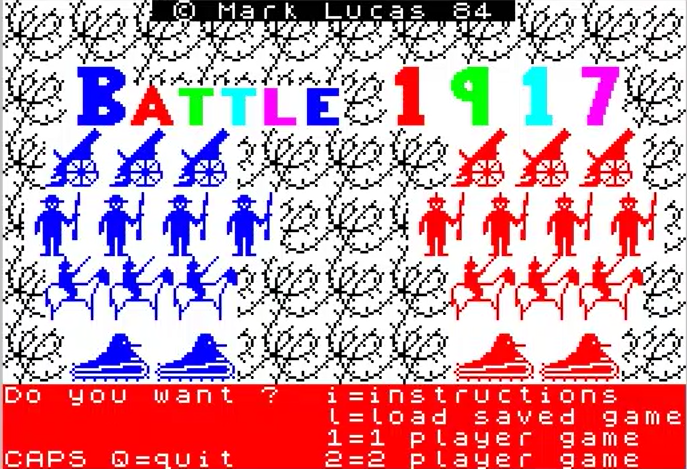
– Lieutenant Narwhal, what’s your plan to win WWI?
– Easy: we shoot the Kaiser next time he visits his troops!
In my previous article, I remarked that by the time of War in Russia there had been at least 50 computer games on the Second World War. The WW1 theme, on the other hand, has been left fallow, and so far I have only covered two games on it (Eagles and Dreadnoughts), none on the land operations. This ends today with Battle 1917, the first WWI land warfare game invoking the familiar images of tanks, artillery, cavalry, swordsmen and kings dashing through the no-man’s land of the Western front.
Battle 1917 starts with a randomly generated terrain and both factions on each side of the map:
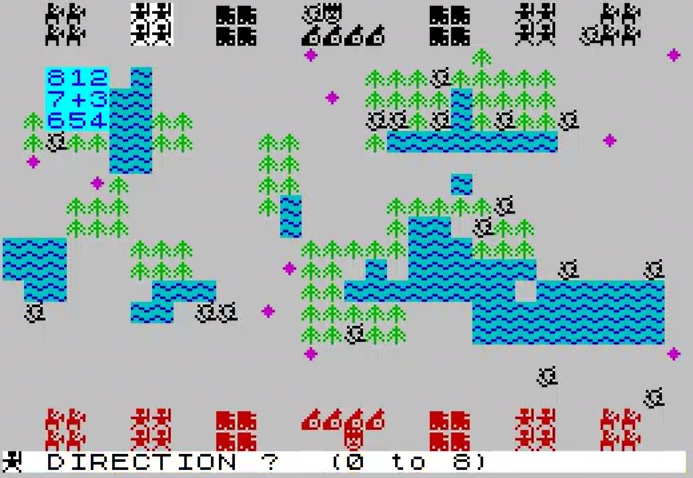
Each side has 5 types of units:
- Infantry, with a speed of 5 and a combat value of 1,
- Cavalry, with a speed of 6 and a combat value of 2,
- Tanks, with a speed of 3 and a combat value of 3,
- Artillery, with a speed of 2 and a combat value of 0. It can shoot after moving with high accuracy at a range of up to 9. If it hits something, the something is destroyed.
- The King, with a speed of 2 and a combat value of 0.
The King is the odd one here, but I feel it is the game pretending you should compare it to Chess, because if it had been called “HQ” no one would have objected. As one can expect, the King is the objective of the other side, if it is lost it is game over.
What makes Battle 1917 special is how the units move. Instead of giving the order unit by unit, the player gives movement orders by squadron (only one “impulse” by turn), with the 4 units trying to comply and being blocked individually by obstacles.
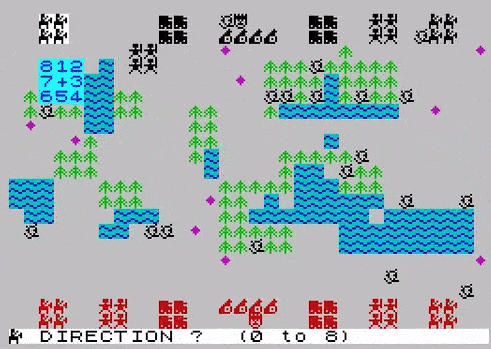
All units follow the same rule, except the King who is alone. Tanks can also crush the forests and barbed wires that stop the other units, and of course artillery can shoot at a range of 9 tiles:
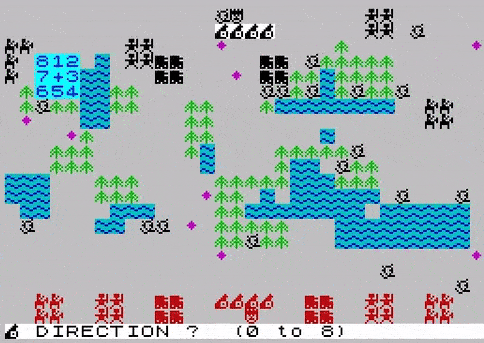
After I have moved my units, the computer gets to move its pieces. It follows different rules than the player: its units move freely and can even double-back, while its artillery hits random locations on the battlefield.
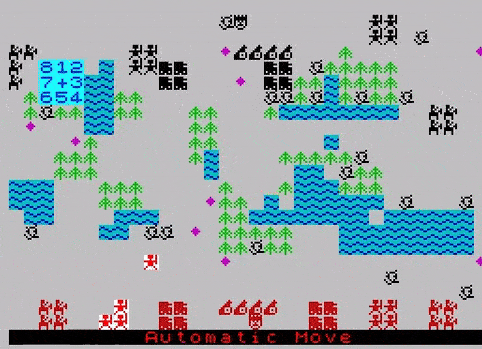
I manage to somehow regroup in the middle of the map, while most of the computer’s force remains stuck behind a lake.
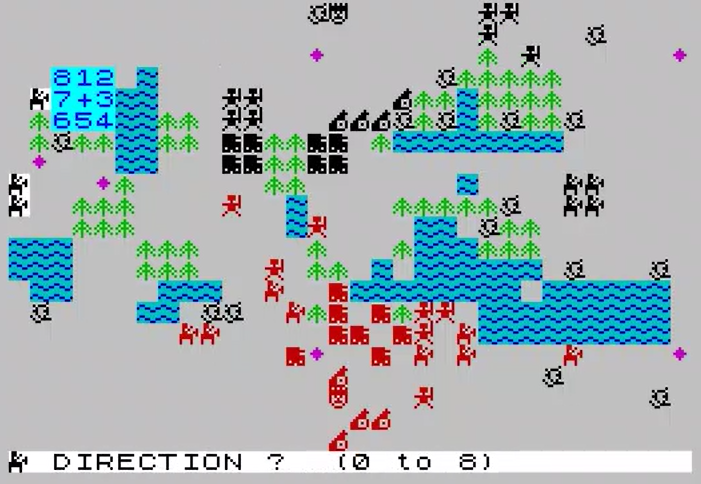
Some German infantry sneaks through and reaches my artillery. Combat is resolved very simply: Roll a die (1-6) and add the combat factor. Whoever wins kills the other side.
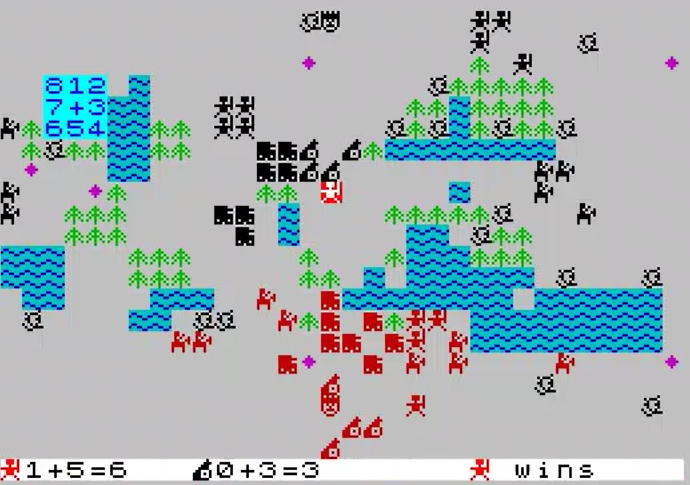
When the German tanks finally decide to crush the forest blocking the rest of their force, the Germans pour in the opening right in front of my artillery. My infantry counter-attacks and hack them down with their swords:
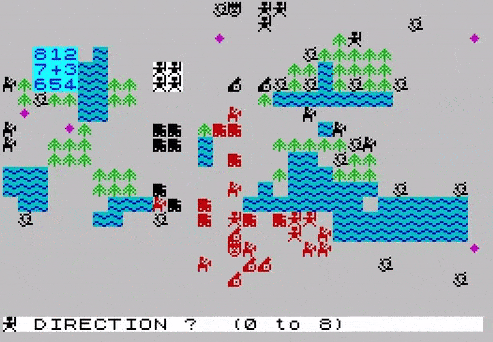
The defeat of the enemies in front of my artillery allows me to approach it, and I snipe the Kaiser with a well-aimed shot:
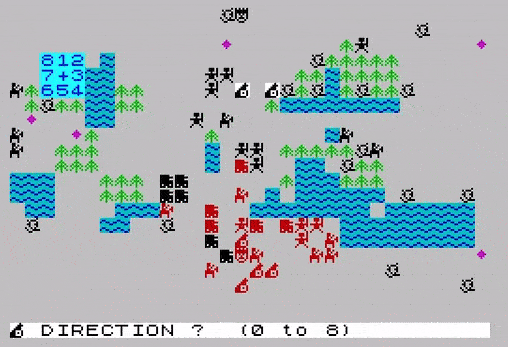
Victory! It took me 5 turns and fewer than 10 minutes to get rid of the Kaiser. I have no idea why this war took so long.
Ratings & Review
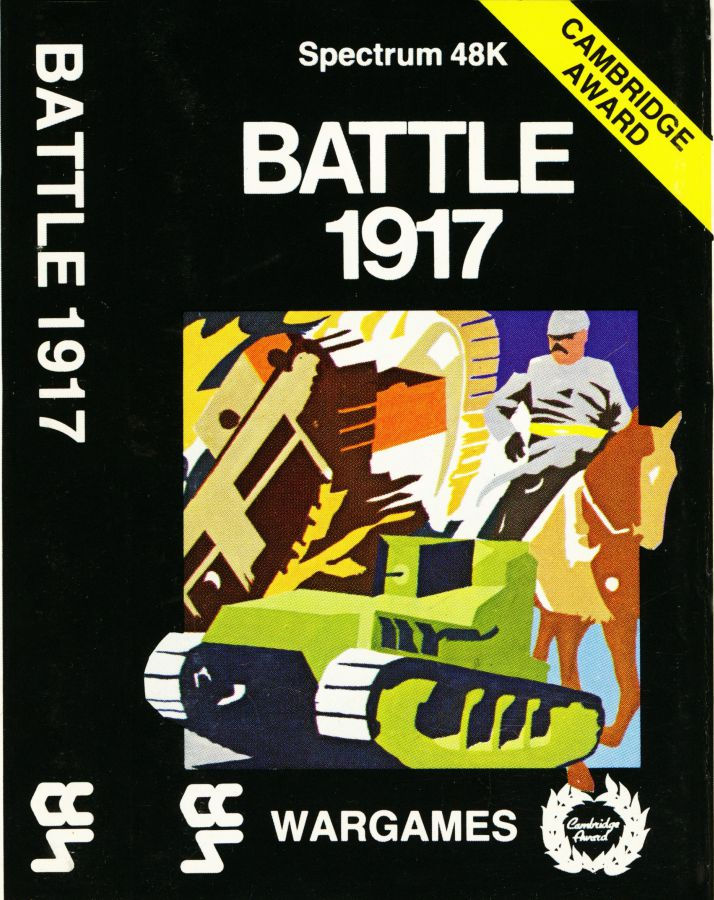
Battle 1917 by Mark Lucas, published by CCS, UK
First release: January 1984 on ZX Spectrum
Genre: Battlefield Tactics
Average duration of a campaign : 10-15 minutes by battle
Total time played : 1 hour
Complexity: Trivial (0/5)
Final Rating: Obsolete
Ranking at the time of review: 86/132
Battle 1917 is the brainchild of Mark Lucas, the winner of the first “Cambridge Award” organized in late 1983 by the magazine Sinclair User and the game publisher Cases Computer Simulations (CCS).
It is not the first time I have mentioned CCS, a video game company that will eventually become the premier British publisher of strategy games, and will be around until the early 90s. CCS had been founded in May 1982 by Melvin Lloyd-Jones, a business consultant with a keen interest in computing. Lloyd-Jones had been disappointed by the offering of video games, because he wanted to play games with decision-making in a business environment and all he found was arcade games. This was during the short window of opportunity when anyone who had a game idea and could code could also propose it through mail-order ads in computing magazines – and that’s exactly how Lloyd-Jones started. CCS started with two games first advertised in June 1982: Airline (about managing an air transport business) and Auto Chef (about managing a food catering business).
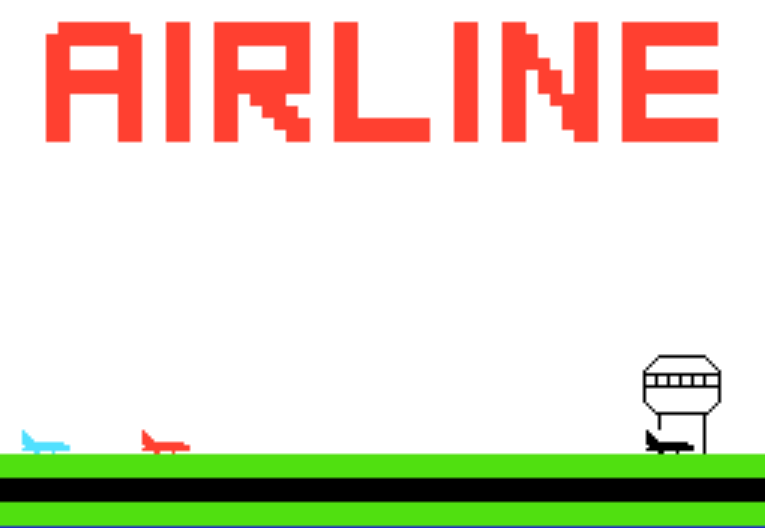
The timing of Airline was perfect, as the game was inspired by the demise of Laker Airways, a popular low-cost company which had been forced into bankruptcy early 1982 by a cartel of large air companies (British Airways, Lufthansa, Pan-Am, TWA,…). This highly-mediatized David vs Goliath battle had inspired Lloyd-Jones, and in Airline the player heads a company called L-Air with the ultimate objective to make £30m and take over British Airways. According to the only full-fledged article I could find on CCS (Home Computing Weekly, 14th June 1983), “Laker’s misfortunes worked to CCS’s advantage, giving Airline extra, if unintentional, publicity“.
Competition and the quick professionalization of video game development prevented most enthusiasts from going big, but Lloyd-Jones was a savvy business operator. CCS’s business games shared a common structure which was quickly adapted to new themes, and with this agility, Lloyd-Jones found customers well beyond the traditional video game audience, for instance schools and colleges for “teaching support“.
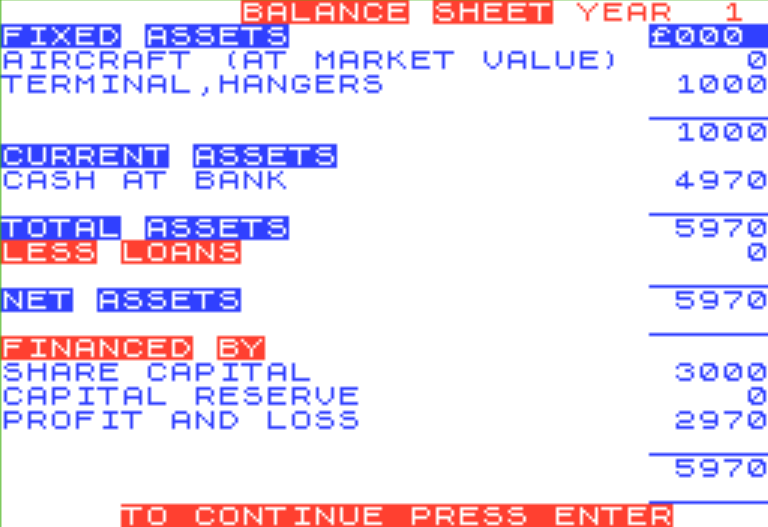
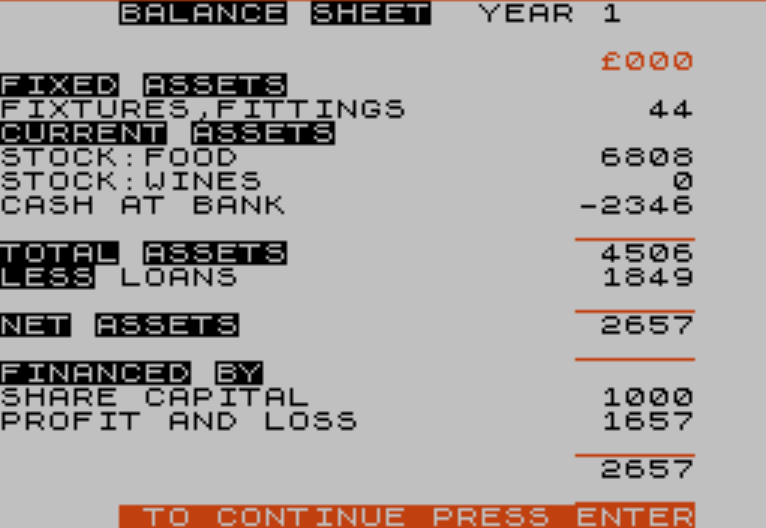
According to the article above, CCS was immediately successful with a turnover of £120 000 in 1982 – this represents around 20 000 copies sold, huge for the time. In fewer than two years, CCS had become the closest UK had to an established video game company, with 12 games in its line-up by the end of 1983.
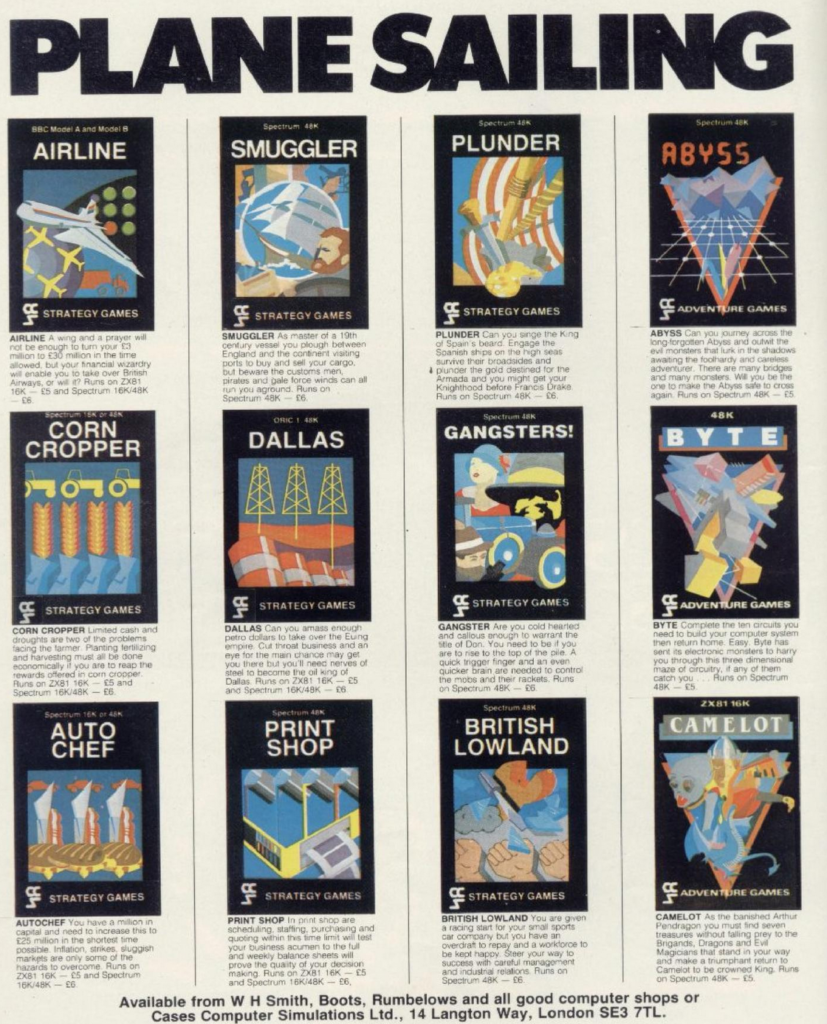
It’s in this capacity that CCS teamed up with Sinclair User to organize the Cambridge Awards, first announced in the August 1983 issue of Sinclair User. The theme for the first year was “Adventure and Strategy Games”, with two categories: ZX Spectrum and ZX81. The winner of each category – announced in December 1983 – would receive £1000 and see their games published by CCS and hand back a 20% revenue share, and that’s why more than 40 years later I played Mark Lucas’ Battle 1917.
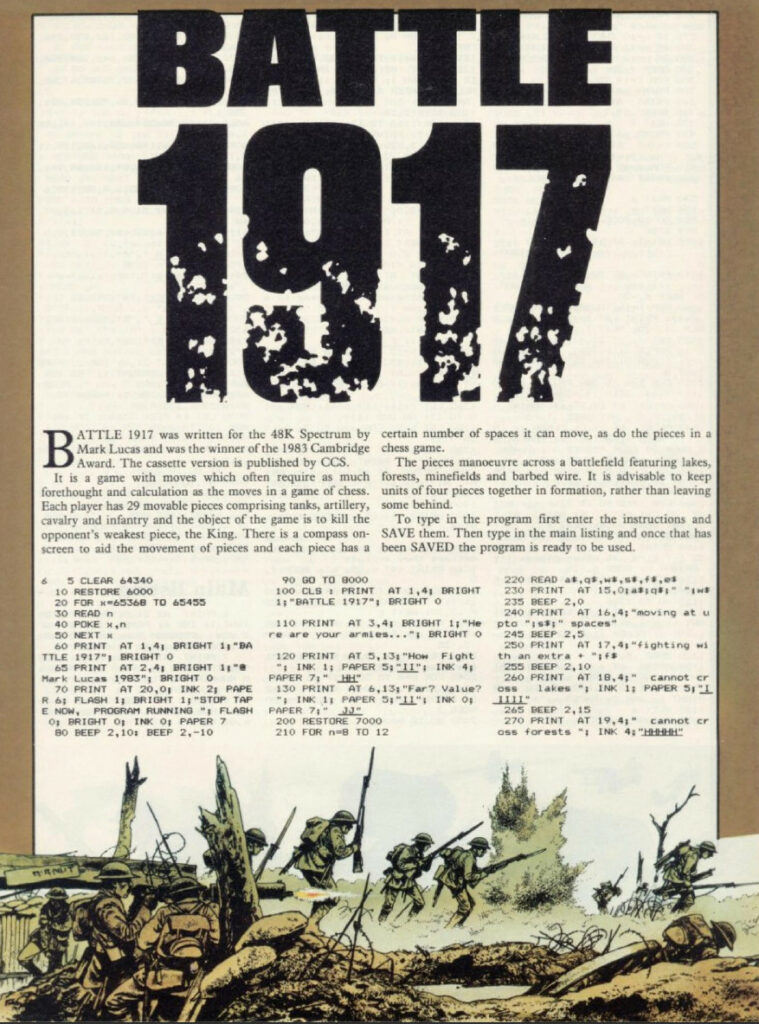
All I know about Mark Lucas is found in the articles covering the competition. A commercial analyst at IBM, he bought a Spectrum for his daughter, quipping: “Fathers usually buy train sets for their sons so that they can play with them. I bought a Spectrum for my daughter for the same selfish reason.” An amateur game designer (“using paper overlays on a peg chessboard“), he soon moved from paper game design to computer game design.
One of the judges explained that Battle 1917 won due to its simplicity and addictiveness. A game called War 70 ranked second, very closely behind Battle 1917 and was also published by CCS. Both games were submitted as two-player games only, but when it was released by CCS (the first ads were in January 1984) Battle 1917 had received a solitaire version while War 70 never did; that’s why I only played the former.
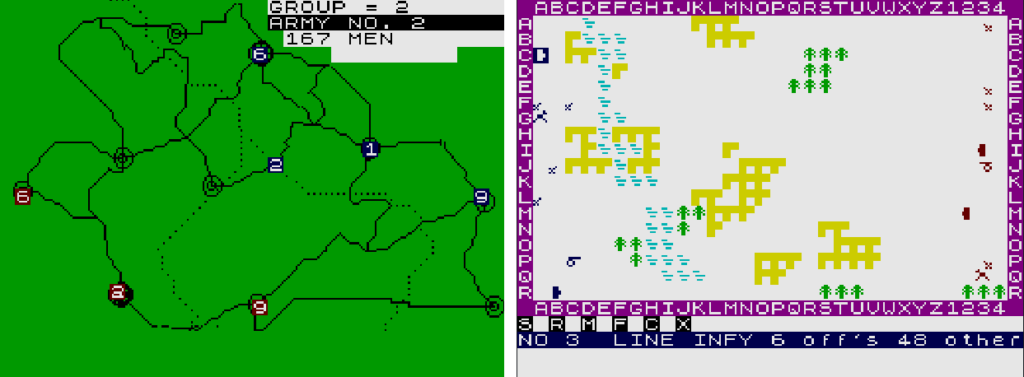
Screenshots from Mobygames
A. Presentation: Quite poor. There are fun shenanigans in the instructions, but apart from that it is mediocre.
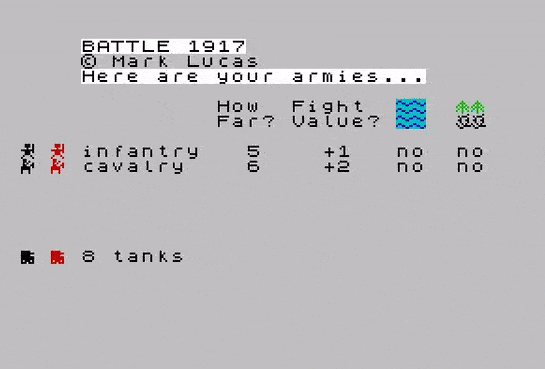
B. UI, Clarity of rules and outcomes: Adequate. There are significant efforts there.
C. Systems: Very poor. The core idea of Battle 1917 is great: moving individual units with group orders is great design-for-effect to represent the problem of command & control. Unfortunately, the game takes that idea and does not run anywhere with it. First, it is poorly implemented: your units move one after the other, which means that when going East or backwards only half of them move. Even worse, there is no compelling reason to keep the lads together, as all combats are individual. There is no difference between attacking with your cavalry piecemeal and attacking as a group. A simple +1 bonus in combat for each friendly unit nearby would have done wonders, but there is no such feature – what a wasted opportunity.
D. Scenario design & balancing: Very poor. The AI does not play by the same rules as the player and it beelines toward the player’s King, obstacles be damned, which does not mix well with the random generation of terrain. There is little thought on unit balancing; sure, cavalry goes faster than infantry, but there is almost no reason for being the fastest with the mostest when being the mostest does not give you any combat advantage.
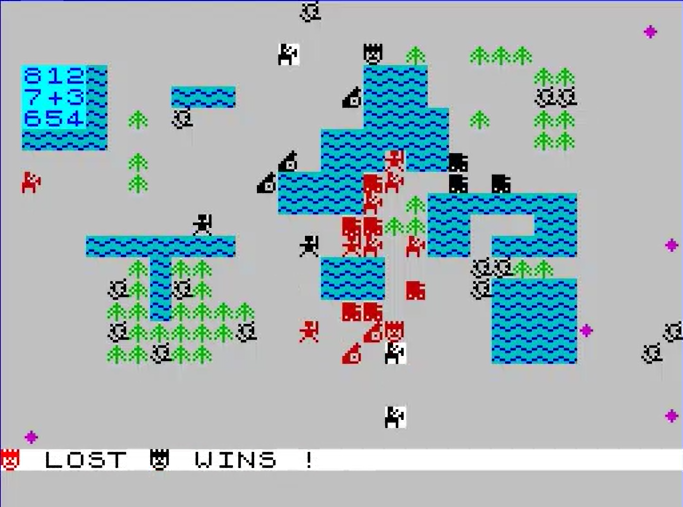
E. Did I make interesting decisions? No.
F. Final Rating: Obsolete. Battle 1917 looks smarter than it is. Still, it is fast, not unpleasant to play and it gives you this fuzzy feeling when you see enemy icons disappear, so there were worse games out there.
Reception
Battle 1917 received few reviews, and they were never great though most had some deference to the fact that it won a competition. Home Computing Weekly (31st January 1984) gives it 4 stars out of 6, good program, “[but] nothing can beat the classic board game of Chess, and this did not change my opinion.” Crash calls it in March 1984 a “specialized taste” but reckons that “[it has] strong element of luck as to who wins a battle. This does rather destroy the tactical value somewhat. It certainly isn’t what you would call an addictive game.“
The only dissonant voice is from Angus Ryall, who returns to Battle 1917 for Crash in November 1984 and this time the deference is over: “The program treats the user like a favoured but moronic grandchild (this does not bode well for the Cambridge Awards Jury. Who are they? Are they utterly bold?)” Speaking of moronic, Ryall comically misses the point when he complains in the same review “units are grouped together in fours, and orders can only be given to the group as a whole.” I agree the game is mediocre, but this behaviour is the purpose of the game, Angus!
It is hard to gauge the success of Battle 1917. If it is any indication, the Cambridge Award runner-up War 70 received a Commodore 64 version while Battle 1917 did not. What’s sure is that after those two games CCS doubled down on wargames, so it cannot have been a total failure. We are going to see a lot more of CCS in the coming articles.